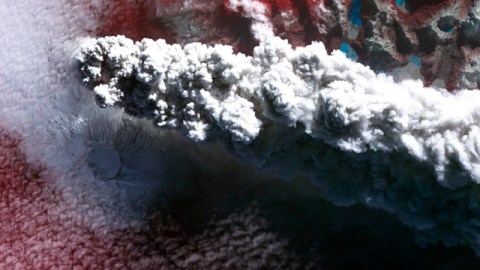Puyehue-Cordón Caulle and Nabro eruptions from space

I’m back! It was a great week off down in Charleston, but it is now time to get back to work. Rather than try to catch up on all the goings on over the past week – and it seems like there was quite a bit – I will instead just highlight some items I ran across since I last posted.
A special thanks to all of you who kept things buzzing around here while I was away – pretty stunning to see over 600 comments left during the week. I’ll try to sift through them all when I have a moment, but I apologize in advance if you all have already talked some of these links dry in my absence.
June has definitely been a “good” month for volcanoes – two relatively obscure volcanoes are currently experiencing major eruptions. Well, I suppose one is a volcano somewhat well known in South America with infrequent eruptions (Puyehue-Cordón Caulle) while the other really did erupt almost “out of the blue” in Africa (Nabro). You can see the latest updates on both of those eruptions over on the Volcanism Blog – they both seem to be waning to some extend. The real story with Puyehue-Cordón Caulle has got to be the distal effects of the eruption, where ash from a volcano in southern South America has wreaked havoc as far away as South Africa and Australia/New Zealand as the ash travels around the world. If Eyjafjallajokull helped to show how small the planet really is, Puyehue-Cordón Caulle is driving that point home with a jackhammer (or $100 million hit to the airlines). It seems that the NASA Earth Observatory has been working overtime with all the images of these volcanic eruptions – there are a multitude of images of the ash plume from Puyehue-Cordón Caulle, both near the volcano (well, on the same continent) and as the ash stretched across the southern hemisphere. Remarkable to think about how much ash is being generated at Puyehue-Cordón Caulle to allow it to spread in such densities all the way around the globe. Equally impressive are the images of ash and pumice spread over Chile and Argentina from the eruption.
There are also a bevy of images from the NASA EO of the Nabro eruption – and it is one of the few ways to actually see what is going on in Eritrea (see below). There was a great “before” image of the volcano followed by all the stunning “after” images from the eruption itself. The ash from Nabro is falling on parts of Ethiopia and Eritrea, but hasn’t had the same far-reaching effect as Puyehue-Cordon Caulle. However, villagers in Ethiopia are now lacking water and food due to contamination from the Nabro ash.

The plume from Nabro as seen on June 21, 2011.
Top left: NASA EO ASTER image of the ash plume from Puyehue-Cordón Caulle seen on June 11, 2011. Click here to see original.





